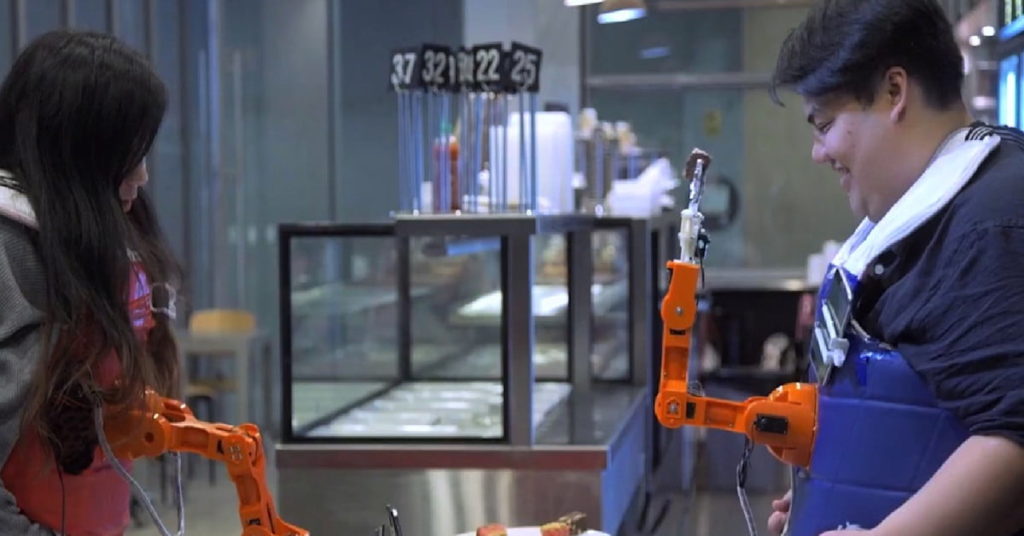Weird Wearable Robot Arm Will Feed You and Your Dinner Companion
Have you ever enjoyed a romantic meal during which, at some point, you or your partner fed one another? Could this join the myriad of jobs that robots can help us perform better? While you might say “heck no,” researchers at the Royal Melbourne Institute of Technology (RMIT) University respectfully disagree. They’ve created an oddball chest-mounted social feeding robot system which uses a third robotic arm to feed either the wearer or their dinner partner. Oh, yes, and the whole thing’s guided by facial recognition technology.
“We designed this system to explore the role of interactive technology to support playful eating experiences,” Yash Mehta, a researcher on the project, told Digital Trends. “When it comes to food and technology, most systems are focused on either calorie intake or screen interactions. We find that eating is so much more than calorie intake — rather, a playful celebration of social engagement with others over food. We want to get people away from screens when eating, and rather see them engage with each other.”
To achieve this, the “Arm-A-Dine” project augments the eating experience by using the facial expressions of one dining partner to guide how the robot arm behaves. Based on the positive or negative expression they make, the chest-mounted robot will either feed them or the person they are sitting across the table from.
The system was recently put through its paces by 12 participants in a study. The researchers concluded that, perhaps unsurprisingly, using a robot arm to feed you and your other diners adds to the “playful social aspect of the dining experience.” Don’t expect to find this rolled out in restaurants any time soon, though.
“Although the system could be used at real world scenarios such as social parties, conference dinner events, or as an icebreaker between strangers, our goal was not to design the most perfect system, but rather push the envelope conceptually,” Florian Mueller, a professor in the School of Media and Communication at RMIT, told us. “What we found out is that how people eat with one another is almost — if not even more — important than what they eat, and technology can play a positive role in this. This knowledge can then be used to design better technology to support eating, especially in scenarios where there is an immediate need to facilitate rich eating experiences.”
This isn’t the first innovative food-related project RMIT’s Exertion Games Lab has developed. Recently we reported on on a swallowable biosensor game, winnable by eating different food and drink to affect the players’ guts.
A paper describing the latest Arm-A-Dine project is available to read online.




